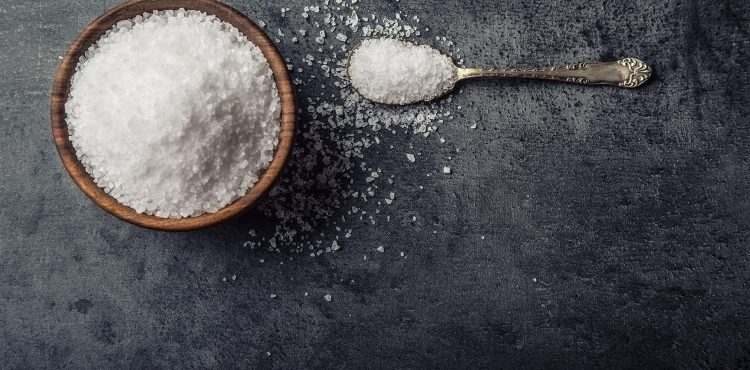
Sauces in China 4.4 times saltier than similar sauces sold in the UK
New research on the salt content of sauces in China and the UK, led by Queen Mary University of London and The George Institute China, has produced the following findings:
- Sauces sold in China contained on average 4.4 times more salt than similar sauces sold in the UK;
- A large decline in the salt content of UK sauces over the course of the past 10 years has been observed in most sauces for which salt targets were set;
- 70% of UK products met the UK 2017 salt targets. If the same targets were applied to the Chinese products, only 13.4% would meet them.
The Chinese population is known for having one of the highest salt intakes in the world. For the past four decades, salt intake in China has consistently averaged above 10g a day, which is more than twice the WHO recommended limit. Sauces are an important and growing contributor to the salt intake for Chinese population. Excess salt intake raises blood pressure, a major cause of strokes and heart disease, which accounts for approximately 40 per cent of deaths in the Chinese population.
Funded by the National Institute for Health Research and published in BMJOpen, this cross-sectional survey comprised around 1,000 sauce products in each country. The data were collected from 2015 to 2017 in major retail stores.
The median salt content of sauces was found to be consistently higher in China compared with the UK, on average 4.4 times the amount of the UK products. Vinegars, bean pastes, and oyster sauces were the sauces with the largest gap (with Chinese products being 7.2 to 13.4 times saltier than their UK equivalents); whereas dark soy sauces, light soy sauces, and mayonnaises had the most similar salt content (although Chinese products still contained 1.2 to 1.3 times more salt than their UK equivalents).
The researchers found that over the course of the past 10 years in the UK, the salt content of sauces mostly decreased when targets were set (e.g. 71% reduction in bean pastes, falling from 3.4g/100g in 2008 to 1.0/100g in 2018), while it mostly increased when no salt targets were set (e.g. 112% increase in marinades, rising from 1.1g/100g in 2013 to 2.4g/100g in 2018).
Moreover, 70% of the UK products met the UK 2017 maximum salt targets. If the same targets were applied to the Chinese products, only 13.4% would meet them. The sauces that were the farthest from meeting the UK 2017 targets in China were the mayonnaises and curry pastes (where no single product met the target), followed by hoisin sauces (4.5%). Even when compared against older UK maximum salt targets (2010 and 2012), less than half of the Chinese products would have complied.
Feng He, Professor of Global Health Research at Queen Mary University of London and Deputy Director of Action on Salt China said, “The target-based strategy pioneered by the UK could be learned by China. This strategy ensures a level playing field for the food industry, so that all companies are working towards the same targets. This is key to achieving population salt reduction while consumers continue to eat the same foods, which is clearly an advantage over companies launching new, reduced-salt products.”
Puhong Zhang, Associate Director of the George Institute China, and China Director of Action on Salt China added: “Sauces are a major contributor to salt intake in China. This study clearly indicates that further salt reduction in the salt contents of sauces is entirely possible in China. China should take action by setting incremental targets to reduce the salt contents of sauces, starting from high-salt products. We are developing a salt reduction website for food industry, which will be used as an effective tool to monitor progress of the food industry’s reformulation efforts and urge the industry to take actions on salt reduction.”
Setting incremental salt targets is a feasible salt reduction strategy, however, there is still a long way to go for China. Even if the amount of salt is reduced incrementally by 20% every 2-3 years, it would still take on average 11-17 years for Chinese sauces to reach the salt content of UK sauces, more specifically, it will take 2 to 3 years for dark soy sauces and 24–36 years for bean pastes and vinegars to reach the salt content of UK sauces.
Sauces sold in China vs the UK: difference in salt content (2015-17)
Sauces | Median salt content in China (g/100 g or ml) | Median salt content in the UK (g/100 g or ml) | Comparison China vs UK sauces (ratio) |
Vinegars | 1.34 | 0.10 | 13.40 times saltier in China |
Bean pastes | 10.59 | 0.81 | 13.07 times saltier in China |
Oyster sauces | 11.30 | 1.56 | 7.24 times saltier in China |
Hoisin sauces | 7.60 | 1.44 | 5.28 times saltier in China |
Curry pastes | 12.52 | 2.75 | 4.55 times saltier in China |
Barbecue sauces | 5.15 | 1.21 | 4.26 times saltier in China |
Chilli sauces | 7.25 | 2.03 | 3.57 times saltier in China |
Salad dressings | 3.88 | 1.20 | 3.23 times saltier in China |
Stocks (as sold) | 45.55 | 22.28
| 2.04 times saltier in China |
Pasta sauces | 1.35 | 0.70 | 1.93 times saltier in China |
Ketchups | 2.47 | 1.45
| 1.70 times saltier in China |
Salad creams | 1.90 | 1.45 | 1.31 times saltier in China |
Mayonnaises | 1.50 | 1.16 | 1.29 times saltier in China |
Light soy sauces | 16.97 | 13.50
| 1.26 times saltier in China |
Dark soy sauces | 18.49 | 15.15 | 1.22 times saltier in China |
English-language enquiries:
Chris Mahony
Interim Faculty Communications Executive (Medicine and Dentistry)
Marketing and Communications Department
Queen Mary University of London
T: +44 207 8825315
E: c.mahony@qmul.ac.uk


